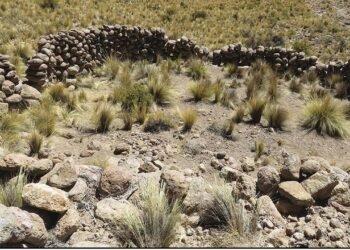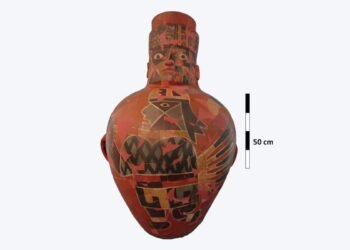Ancient symbols adorning the walls of a 2,700-year-old temple in the ancient city of Dūr-Šarrukīn, known today as Khorsabad, Iraq, have long been a mystery to historians and archaeologists alike. The sequence of five enigmatic symbols – a lion, eagle, bull, fig tree, and plow – has puzzled experts for over a century, with various interpretations proposed but none definitive.

In the late nineteenth century, French excavators were the first to document these symbols, which were prominently displayed in temples throughout the city. These symbols, often compared to Egyptian hieroglyphs or seen as expressions of imperial might, remained cryptic until now.
Dr. Martin Worthington, an Assyriologist from Trinity College Dublin, has recently provided a compelling interpretation of these symbols. In a paper published in the Bulletin of the American Schools of Oriental Research, Dr. Worthington proposes a groundbreaking hypothesis: the sequence of symbols actually spells out the name ‘Sargon’ (šargīnu) in Assyrian when understood in the context of their cultural and linguistic significance.
According to Dr. Worthington’s research, each symbol corresponds to a specific constellation, adding a celestial dimension to their interpretation. For example, the lion represents Leo, and the eagle corresponds to Aquila. Even more intriguingly, the fig tree, standing in for the constellation known as ‘the Jaw’, underscores the ancient Mesopotamians’ complex understanding of the heavens.

Beyond their astronomical significance, these symbols served a dual purpose: to immortalize King Sargon’s name in the celestial realm and to associate him with the gods Anu and Enlil, further elevating his status. This assertion is supported by the fact that the symbols align with both the Assyrian words for the images and specific constellations, suggesting a deliberate fusion of linguistic and celestial symbolism.
Dr. Worthington’s theory, while not definitively proven, offers a compelling explanation for the longstanding mystery surrounding these symbols. As he aptly notes, the odds of such connections being mere coincidence are remarkably low.
The significance of Khorsabad, once known as Dūr-Šarrukīn, in the annals of ancient history, cannot be overstated. By unraveling the mysteries of these symbols, researchers gain a deeper understanding of the complexities and achievements of one of the world’s earliest civilizations. Dr. Worthington’s research demonstrates how they sought to perpetuate the legacy of their rulers through symbolic representations in both earthly and celestial realms.






















